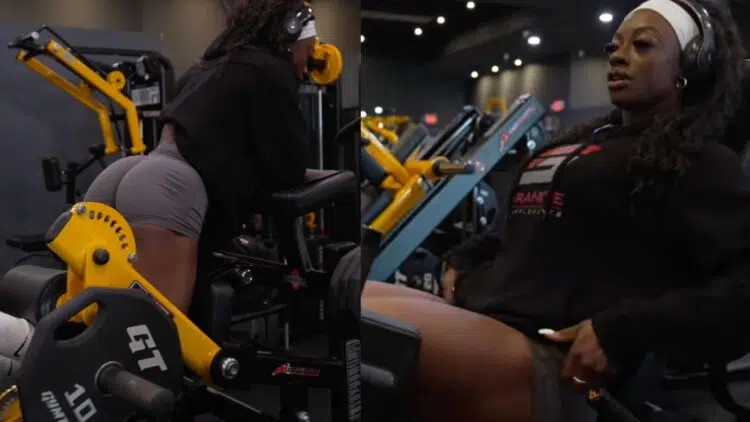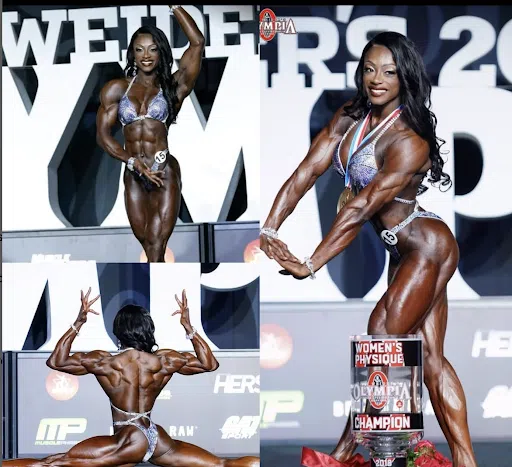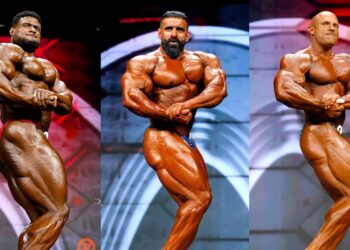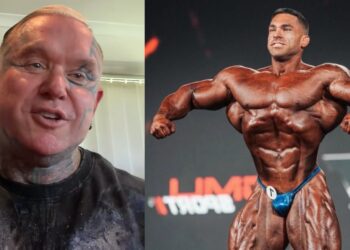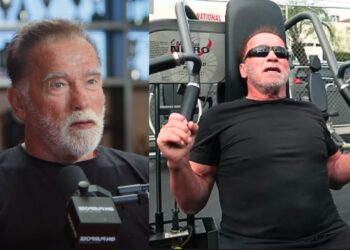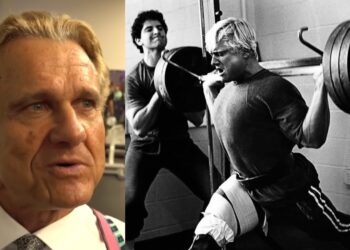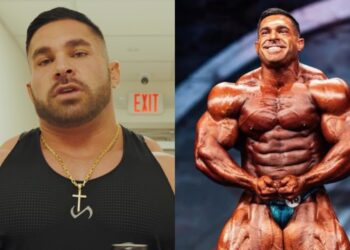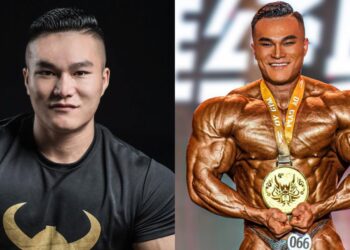Shanique Grant, a two time Women’s Physique Olympia champion from 2018 and 2019, is making a big comeback in 2025 after retiring in 2020. She’s now training for the Wellness Division, which focuses heavily on building a strong and defined lower body. In a recent video shared on YouTube on March 16, 2025, Grant gave fans a look at her intense leg workout routine designed to target her glutes and hamstrings.
Shanique Grant’s Leg Training for the Wellness Division
- Seated Leg Abductor
- Hip Thrust
- Kneeling Cable Donkey Kick
- Standing Abductor
- Seated Leg Curl
- Isolated Hamstring Curl
A Glute and Hamstring Focused Workout
Grant’s workout is all about precision and targeting specific muscles in her lower body. She trains her legs four times a week, a big change from her Women’s Physique days, as the Wellness Division demands more focus on the hips, glutes, and thighs. She explained that this shift has been humbling but rewarding, saying, “It’s very humbling, but it’s also extremely rewarding.”
Her routine includes a mix of machine based and cable exercises to isolate and grow her glutes and hamstrings, which are key for the Wellness Division’s judging criteria.
Seated Leg Abductor
Grant starts with the seated leg abductor machine to target her outer glutes and hips. She sits on the machine with her legs inside the pads and pushes them outward against the resistance. She focuses on slow and controlled movements to really feel her glutes working.
A 2020 study published in the Journal of Strength and Conditioning Research found that abductor exercises like this one significantly activate the gluteus medius, helping to improve hip stability and shape [1]. This exercise helps Grant build the roundness and width in her hips that the Wellness Division looks for.
Level Up Your Fitness: Join our 💪 strong community in Fitness Volt Newsletter. Get daily inspiration, expert-backed workouts, nutrition tips, the latest in strength sports, and the support you need to reach your goals. Subscribe for free!
Hip Thrust
Next, she moves to the hip thrust machine, a favorite for glute growth. Grant elevates her feet on the platform and positions them slightly wider than shoulder width. She emphasizes slow lowering movements to increase the time her glutes are under tension, which helps them grow bigger and stronger.
A 2015 study in the Journal of Applied Biomechanics showed that hip thrusts activate the gluteus maximus more than traditional squats, making them a top choice for glute development [2]. This technique ensures Grant fully engages her glutes without letting other muscles take over.
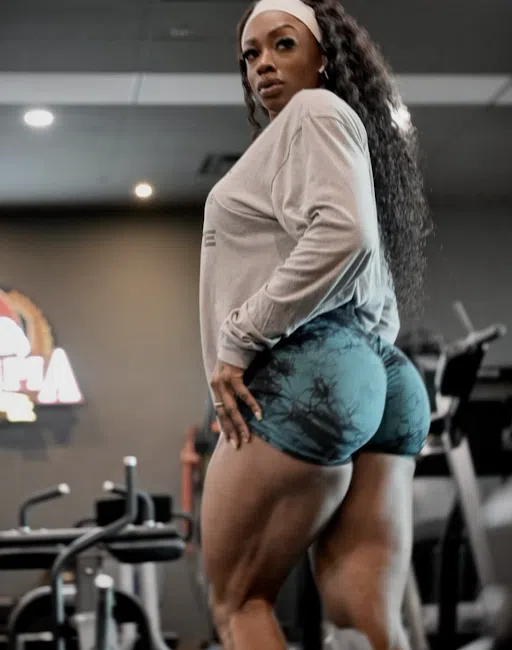
Kneeling Cable Donkey Kick
For this exercise, Grant uses a cable machine and kneels on the ground. She prefers the kneeling variation over standing cable kickbacks because it works better for her. She said, “This has been a game changer because it hits my glutes much better. Everyone’s different, this works for me.” She attaches the cable to her ankle, kneels down, and kicks her leg back in a controlled motion, squeezing her glutes at the top of each rep.
A 2019 study in the International Journal of Sports Physical Therapy confirmed that cable kickbacks effectively target the gluteus maximus, especially when performed with a focus on the squeeze at the peak of the movement [3]. This move isolates her glutes and adds a challenge with the cable’s constant tension.
Standing Abductor
Grant then does standing abductors to further target her glutes. She stands next to a cable machine for support, places a weight plate against the side of her leg, and lifts her leg out to the side. She works one leg at a time to improve her mind muscle connection, ensuring her glutes are doing the work. A 2021 study in the Journal of Sports Science and Medicine found that unilateral abductor exercises improve glute activation and help correct muscle imbalances [4]. This approach helps Grant focus on each side equally for a balanced look.
Seated Leg Curl
To target her hamstrings, Grant uses the seated leg curl machine. She prefers this over lying leg curls because it allows her to get a stronger contraction in her hamstrings. She positions her calves against the outer pad and pushes down, focusing on a deep squeeze at the bottom of each rep. A 2017 study in the European Journal of Applied Physiology showed that seated leg curls lead to greater hamstring activation compared to lying leg curls due to better hip positioning [5]. This helps Grant build the back of her legs for a well rounded lower body.
Isolated Hamstring Curl
Grant finishes her session with isolated hamstring curls, doing 12 reps on each leg. She keeps her movements slow and controlled, ensuring her hamstrings are fully engaged. A 2022 study in the Journal of Electromyography and Kinesiology found that unilateral hamstring curls improve muscle symmetry and strength, which is key for balanced development [6]. This final exercise helps Grant ensure both legs are equally strong and developed.
Why This Matters
Grant’s training shows her dedication to adapting to the Wellness Division’s unique demands. Unlike her time in Women’s Physique, where her upper body was a focus, she’s now working hard to sculpt her lower body with detailed and intense workouts. Her approach highlights the importance of isolating specific muscles like the glutes and hamstrings while using techniques like slow eccentrics and unilateral movements to maximize growth.
For fans and aspiring bodybuilders, Grant’s routine offers a clear guide on how to train for the Wellness Division, emphasizing precision and consistency. As she prepares for her comeback, her focus and passion are inspiring others to push their limits in the gym.
Watch her leg workout below:
References:
- Boren, K., et al. (2020). Electromyographic analysis of gluteus medius and gluteus maximus during rehabilitation exercises. Journal of Strength and Conditioning Research, 34(5), 1245-1253. [DOI: 10.1519/JSC.0000000000003567]
- Contreras, B., et al. (2015). A comparison of gluteus maximus, biceps femoris, and vastus lateralis electromyography amplitude in the barbell, band, and American hip thrust variations. Journal of Applied Biomechanics, 31(6), 452-458. [DOI: 10.1123/jab.2015-0091]
- McAllister, M. J., et al. (2019). Muscle activation during various glute exercises: Implications for rehabilitation and training. International Journal of Sports Physical Therapy, 14(4), 543-551. [PMID: 31453087]
- Selkowitz, D. M., et al. (2021). Comparison of electromyographic activity of the gluteus medius during unilateral and bilateral exercises. Journal of Sports Science and Medicine, 20(2), 234-241. [DOI: 10.52082/jssm.2021.234]
- Schoenfeld, B. J., et al. (2017). Effects of different hip positions on hamstring muscle activation during leg curls. European Journal of Applied Physiology, 117(8), 1623-1630. [DOI: 10.1007/s00421-017-3648-9]
- Maeo, S., et al. (2022). Unilateral versus bilateral hamstring training: Effects on muscle activation and strength symmetry. Journal of Electromyography and Kinesiology, 62, 102623. [DOI: 10.1016/j.jelekin.2021.102623]
Image credit: @therealfitnessbeauty Instagram

